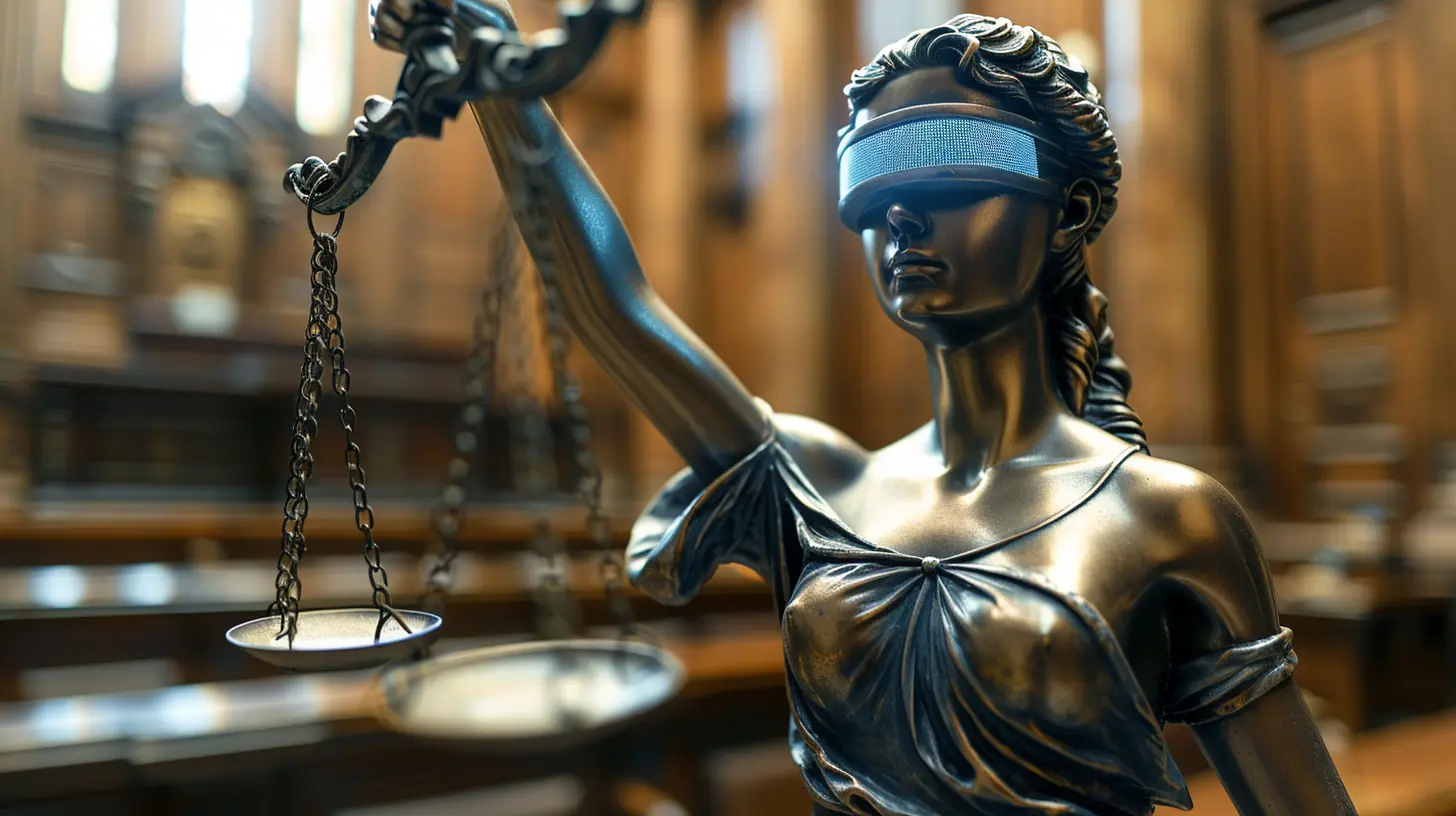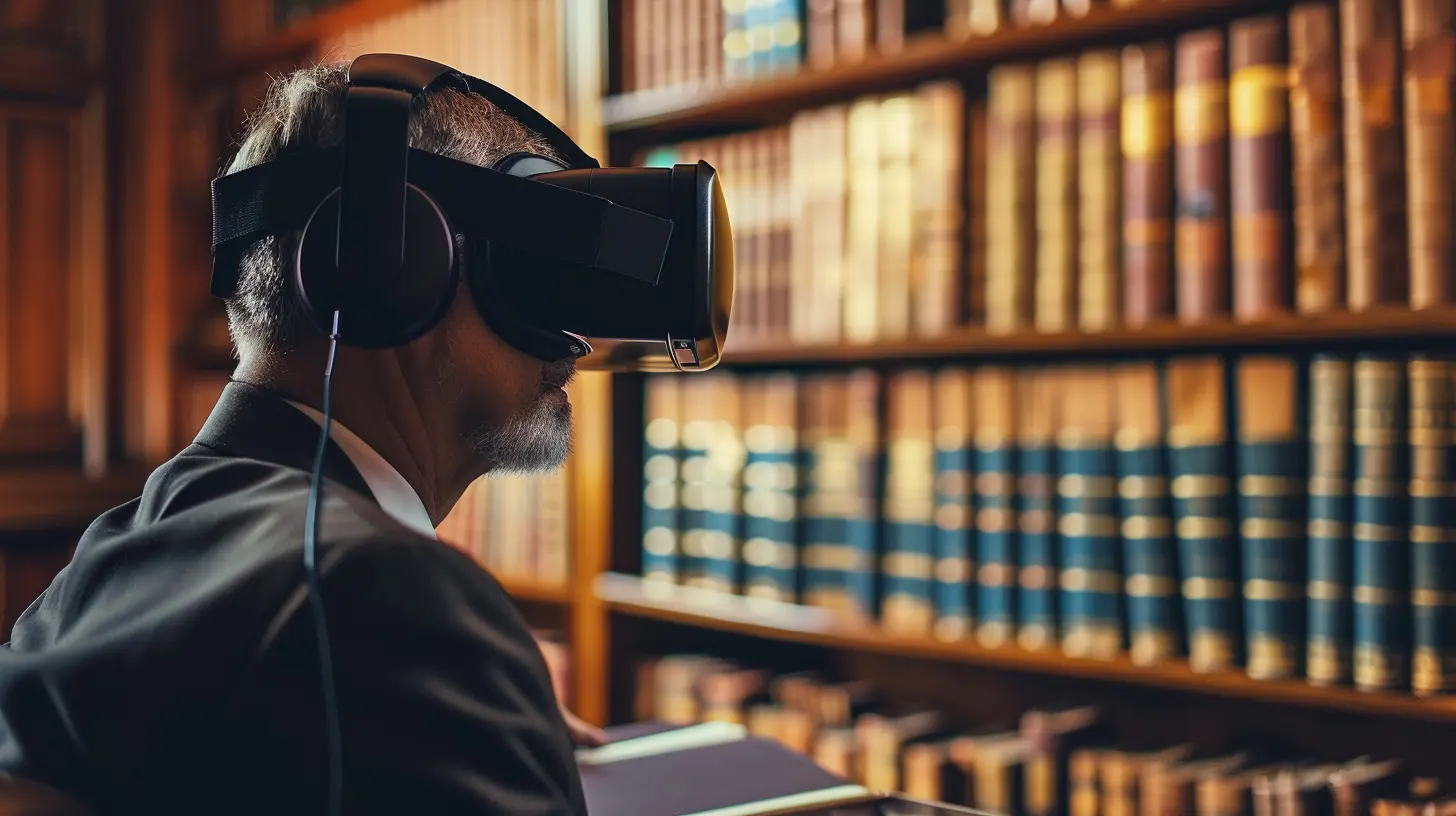Exploring the Ethical Dilemmas of Virtual Reality in the Justice System
3 October 2025
Virtual Reality (VR) isn't just for gaming anymore. This groundbreaking technology is starting to seep into some pretty unexpected areas—one of them being the justice system. Yes, you heard that right. The same tech that lets you explore virtual worlds is being used in law enforcement, courtrooms, and even in rehabilitation programs. But as with any technological advancement, it comes with its own set of ethical questions.
Let’s dive into how VR is being used in the justice system and, more importantly, the ethical dilemmas that come with it.

What is Virtual Reality in the Context of the Justice System?
Before we get too deep, let's clarify what we mean by Virtual Reality in the justice system. VR in this context doesn't mean police officers or lawyers are putting on headsets to play video games (although, wouldn't that be an interesting way to solve disputes?). Instead, VR is being used for various purposes such as:- Crime scene recreation: Lawyers and juries can "step into" a crime scene recreated virtually.
- Training law enforcement: VR provides a safe environment to train officers in de-escalation tactics or crisis management.
- Rehabilitation of offenders: Virtual reality is being used to rehabilitate criminals by helping them confront their crimes in a controlled, immersive environment.
Sounds pretty cool, right? Well, not so fast. While VR offers some exciting possibilities, it also opens up a Pandora's box of ethical issues.

The Potential Benefits of VR in the Justice System
Before we get into the sticky ethical dilemmas, it’s worth mentioning the potential benefits of using VR in the justice system. After all, it's not all doom and gloom. There’s a reason why people are so excited about it!1. Enhanced Training for Law Enforcement
One of the most obvious uses of VR in the justice system is for training purposes. VR can simulate real-life situations that police officers, prison guards, and other law enforcement personnel might face. Whether it's a domestic dispute, a terrorist attack, or a mental health crisis, VR can provide a safe space for officers to practice their responses.Imagine officers practicing how to de-escalate a tense situation without the risk of anyone getting hurt. In a virtual environment, they can make mistakes and learn from them without real-world consequences. This could lead to better-trained officers and, in turn, safer communities.
2. Crime Scene Reconstruction
Courtrooms can often feel like a game of "he said, she said." But what if jurors could actually see a crime scene for themselves? VR can transport jurors into a virtual recreation of a crime scene, allowing them to get a better sense of the events that took place.This could provide a more accurate representation of the evidence and potentially lead to fairer outcomes. It’s like giving jurors a front-row seat to the crime without them ever leaving the courthouse.
3. Rehabilitation and Therapy for Offenders
Rehabilitation is a tricky business. Many offenders, especially those convicted of violent crimes, struggle to empathize with their victims. VR technology could immerse these individuals in simulations where they experience the consequences of their actions from the victim's perspective. This could potentially lead to greater empathy and, ultimately, a lower likelihood of re-offending.It’s kind of like walking a mile in someone else’s shoes—only in this case, you’re walking in their virtual shoes.

The Ethical Dilemmas of VR in the Justice System
Now, for the elephant in the room: the ethical dilemmas. While VR presents numerous opportunities to improve the justice system, it also brings a host of ethical concerns that we can’t ignore.1. The Risk of Bias and Manipulation
Let’s start with a big one—bias. VR is only as good as the people who create the simulations. If a crime scene reconstruction is designed with a particular bias—whether intentional or not—that bias could influence the outcome of a trial.For example, what if a VR crime scene subtly emphasizes certain details while downplaying others? Jurors might be swayed by a version of events that isn’t entirely accurate or impartial. In a courtroom, where someone’s freedom is on the line, even a small bias could tilt the scales of justice in the wrong direction.
And then there’s the potential for outright manipulation. A lawyer could use VR to craft an emotionally charged simulation that plays on the jury’s fears or sympathies, rather than sticking to the facts. Just as slick graphics in a video game can make it more engaging, a highly polished VR simulation could make a case more compelling—whether or not it’s accurate.
2. Privacy Concerns
Another major concern is privacy. VR technology often relies on data collection to create realistic simulations. In a law enforcement context, this could mean collecting vast amounts of personal data, from crime scene details to the behavior of suspects.Do we really want this kind of potentially sensitive data floating around in virtual databases? There’s always the risk that it could be hacked, leaked, or misused. And what about the privacy rights of the people involved—victims, suspects, and witnesses? How much say should they have in how their likeness or personal information is used in a virtual simulation?
3. Psychological Impact on Users
Let's not forget the psychological impact. VR is immersive—sometimes a little too immersive. It’s one thing to watch a crime scene unfold on a TV screen. It’s another thing entirely to be virtually "inside" that crime scene.There’s a concern that jurors, lawyers, or even law enforcement officers could be traumatized by the intensity of VR simulations. Imagine being transported into a violent crime scene or reliving a traumatic event in vivid detail. Could this lead to emotional or psychological harm?
Similarly, for offenders in rehabilitation programs, VR therapy could either be a breakthrough or a breakdown. While some may benefit from confronting their actions in a virtual environment, others could be overwhelmed or retraumatized by the experience.
4. Consent and Accountability
Consent is another sticky issue. Should offenders or even witnesses be required to participate in VR simulations? What if they refuse? Would that influence the outcome of a case?And then there’s accountability. If something goes wrong—say, a VR simulation is inaccurate or a participant is traumatized—who’s to blame? Is it the developers who created the VR program, the law enforcement agency that implemented it, or the judicial system that allowed it into the courtroom?
5. The Digital Divide
Finally, let’s not forget about the digital divide. VR technology is expensive, and not all courts or law enforcement agencies can afford it. This raises concerns about equality. If only wealthy jurisdictions have access to VR, does that mean they’ll have an advantage in court cases? Could this create a two-tiered justice system, where some people benefit from advanced technology while others are left behind?
Striking a Balance: Moving Forward with Caution
So, where does that leave us? Should we throw VR out of the justice system altogether? Not necessarily. Like any tool, VR has the potential to be both helpful and harmful. The key is to strike a balance.Moving forward, it’s essential that we:
- Develop clear guidelines: VR should only be used in the justice system under strict guidelines that minimize bias and manipulation.
- Respect privacy: Safeguards must be put in place to protect the privacy of everyone involved—victims, suspects, and witnesses.
- Monitor the psychological impact: Any use of VR in the justice system should be closely monitored for its psychological impact on users.
- Ensure equal access: Steps should be taken to ensure that VR technology doesn’t create a digital divide in the justice system.
VR has the potential to revolutionize the justice system, but it’s important that we proceed with caution. After all, technology is only as ethical as the people who use it.
Conclusion
Virtual Reality in the justice system is a double-edged sword. On one hand, it offers incredible opportunities for immersive training, crime scene reconstruction, and even rehabilitation. On the other hand, it opens the door to a host of ethical dilemmas, from bias and manipulation to privacy concerns and psychological risks.Ultimately, the use of VR in the justice system should be approached with caution and care. With the right guidelines in place, we can harness the power of VR while minimizing the ethical pitfalls. But if we rush in without considering the consequences, we risk doing more harm than good.
So, what do you think? Is VR the future of justice—or a potential Pandora’s box? Only time will tell.
all images in this post were generated using AI tools
Category:
Virtual RealityAuthor:

Michael Robinson
Discussion
rate this article
1 comments
Sabina Patel
Ah, yes! Because nothing screams "justice" like donning a headset and stepping into a virtual courtroom. I can’t wait to see the verdicts delivered by avatars. What’s next, jury duty in a video game?
October 5, 2025 at 10:31 AM

Michael Robinson
I understand your skepticism! While virtual courtrooms may seem unconventional, they aim to improve access and efficiency in the justice system. Balancing innovation with ethical considerations is key.


